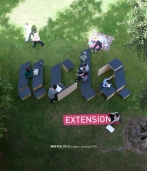Back in 2008, I conducted some research about needs and preferences of continuing professional education students, segmented by generation. At the time, one result in particular stood out for me: a surprising percentage of respondents from the baby boomer segment indicated they were interested in a “post-retirement career.”
This makes sense. Baby boomers likely will live way past traditional retirement age. Most find great meaning in work and may not want to give that up completely. Some may want to move in a different direction with a new career involving more creativity, a lifelong passion, or with greater positive social impact.
Since 2008, many members of the boomer generation found their retirement portfolios greatly diminished and/or they were laid off from their jobs in declining industries. This group will continue to work out of economic necessity. See this interesting blog post by Kerry Hannon on why one should consider working until the age of 70.
From the employer side, there would be a tremendous workforce shortage and knowledge capture crisis if all 76 million baby boomers retired “on schedule.” It makes sense for employers to figure out how to harness all available talent. This may require envisioning flexible, part-time, seasonal, or contract employment options.
That brings me to Empowered UCLA Extension, the program featured in the video above. This program was developed specifically to serve the needs of baby boomers with an academically robust, quick, and effective way to gain relevant skills in areas experiencing employment growth. We partnered with a Silicon Valley start-up, headed by entrepreneur, Steve Poizner. This venture allows us to leverage UCLA Extension’s proven professional certificate programs by offering them to a national audience through online delivery of a complete package incluidng career assessment, educational programs, and career search support. And one more thing: We will be the first to offer these services via an iPad app, custom designed by Empowered.
Initial certificates include:
- College Counseling
- Financial Planning
- Global Sustainability
- Healthcare Management
- Human Resources
- IT Management
- Marketing and New Media
- Nonprofit Management
- Patient Advocacy
- Project Management
- And more to follow in the future.






























